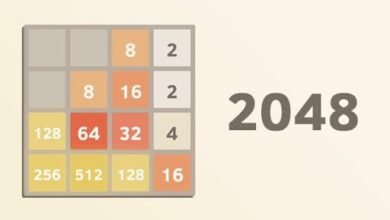Mastering the Balance Between Form and Function in Product Design
How to approach this balance, and the impact it can have on the overall

In this article, we’ll explore why balancing form and function is critical in product design agency, how to approach this balance, and the impact it can have on the overall user experience and market success of a product.
The Importance of Form and Function in Product Design
Visual Appeal and Brand Identity
Form refers to the aesthetics of a product its shape, color, texture, and overall appearance. It’s the element that catches a user’s eye and creates a strong first impression. A well-designed form not only makes a product look good but also aligns with the brand’s identity and values. A visually attractive product can evoke emotions, create desire, and stand out in a crowded marketplace.
However, form isn’t just about looks. The aesthetics of a product can influence how users perceive its quality and usability. For example, an elegantly designed smartphone suggests high quality and cutting-edge technology, even before the user interacts with it. Form also affects how users feel about the product whether it seems intuitive, innovative, or trustworthy.
Usability and Practicality
Function, on the other hand, refers to the product’s performance, usability, and how well it fulfills its intended purpose. No matter how beautiful a product is, if it doesn’t work as expected or solve a user’s problem, it’s unlikely to succeed in the market. Function ensures that a product delivers value to the user by being reliable, efficient, and easy to use.
Designers must consider ergonomics, usability, and accessibility when thinking about function. A well-designed product should be intuitive, allowing users to operate it without confusion or frustration. For example, a chair may look stylish, but if it’s uncomfortable to sit on, its functional purpose is compromised. Similarly, a beautifully designed app may attract users, but if it’s difficult to navigate, it won’t retain them.
Why Balancing Form and Function is Critical
Successfully balancing form and function is essential because both aspects contribute to the overall user experience. A product that looks good but doesn’t work well will lead to dissatisfaction, while a functional product that lacks aesthetic appeal may fail to capture attention or inspire loyalty. Striking the right balance between these two elements ensures that a product not only performs well but also provides a pleasant and engaging user experience.
User-Centered Design
The balance between form and function is at the heart of user-centered design (UCD). UCD emphasizes designing products with the end-user in mind, considering both their practical needs and their emotional reactions. A product that harmoniously blends form and function meets both the cognitive and emotional needs of the user, creating a positive experience from first interaction to long-term use.
Market Appeal
Products that achieve the right balance between form and function have a stronger market appeal. Consumers are drawn to products that are visually attractive, but they also want products that are easy to use and solve their problems. A well-balanced product satisfies both of these needs, making it more likely to succeed in the marketplace.
Brand Differentiation
Balancing form and function can also differentiate your brand in a competitive market. A product that excels in both areas stands out from the competition by offering a superior experience. Companies that prioritize this balance are seen as thoughtful, innovative, and user-focused, which can lead to greater customer loyalty and stronger brand identity.
How to Balance Form and Function in Product Design
Achieving the right balance between form and function requires a thoughtful and intentional approach to UI & UX design Services. Here are several strategies to help designers navigate this balance:
Understand the User’s Needs
The first step in balancing form and function is understanding the user’s needs, preferences, and pain points. Conducting user research, interviews, and testing can help designers gain insights into what users value in both the aesthetics and performance of a product.
Design Iteratively
Balancing form and function is rarely achieved on the first try. It’s an iterative process that involves continuous testing, feedback, and refinement. Prototyping and testing with real users throughout the design process can help identify areas where form or function may be lacking.
Collaborate Across Disciplines
Collaboration between designers, engineers, and other stakeholders is essential for balancing form and function. Designers may focus more on the aesthetics, while engineers prioritize the product’s functionality. By working together, they can find solutions that satisfy both form and function, ensuring that the product is visually attractive and practical to use.
Prioritize Simplicity
Simplicity is often the key to achieving balance. A product that is both simple in form and function is more likely to resonate with users. Overcomplicating either aspect can lead to confusion and frustration. Simple, elegant designs often result in a cleaner, more intuitive user experience, while also being aesthetically pleasing.
Examples of Balancing Form and Function
Some of the world’s most successful products are those that have mastered the balance between form and function. Consider the following examples:
- Dyson Vacuum Cleaners: Dyson products are known for their sleek design and high-performance functionality. They’re visually appealing yet highly efficient, making them both attractive and practical for users.
- Tesla Cars: Tesla vehicles strike a balance between futuristic design and innovative technology. The cars not only look sleek and modern but also offer advanced features and performance that enhance the driving experience.
- IKEA Furniture: IKEA’s furniture products combine simple, modern designs with functional, space-saving solutions. They are affordable, easy to assemble, and meet the needs of consumers who want both style and practicality.
Conclusion
Mastering the balance between form and function is essential for creating successful, user-friendly products that stand out in the marketplace. While form appeals to the user’s emotions and aesthetics, function addresses their practical needs and usability.
By understanding user expectations, iterating designs, and collaborating across disciplines, product teams can create products that are visually appealing, highly functional, and ultimately, more successful.



